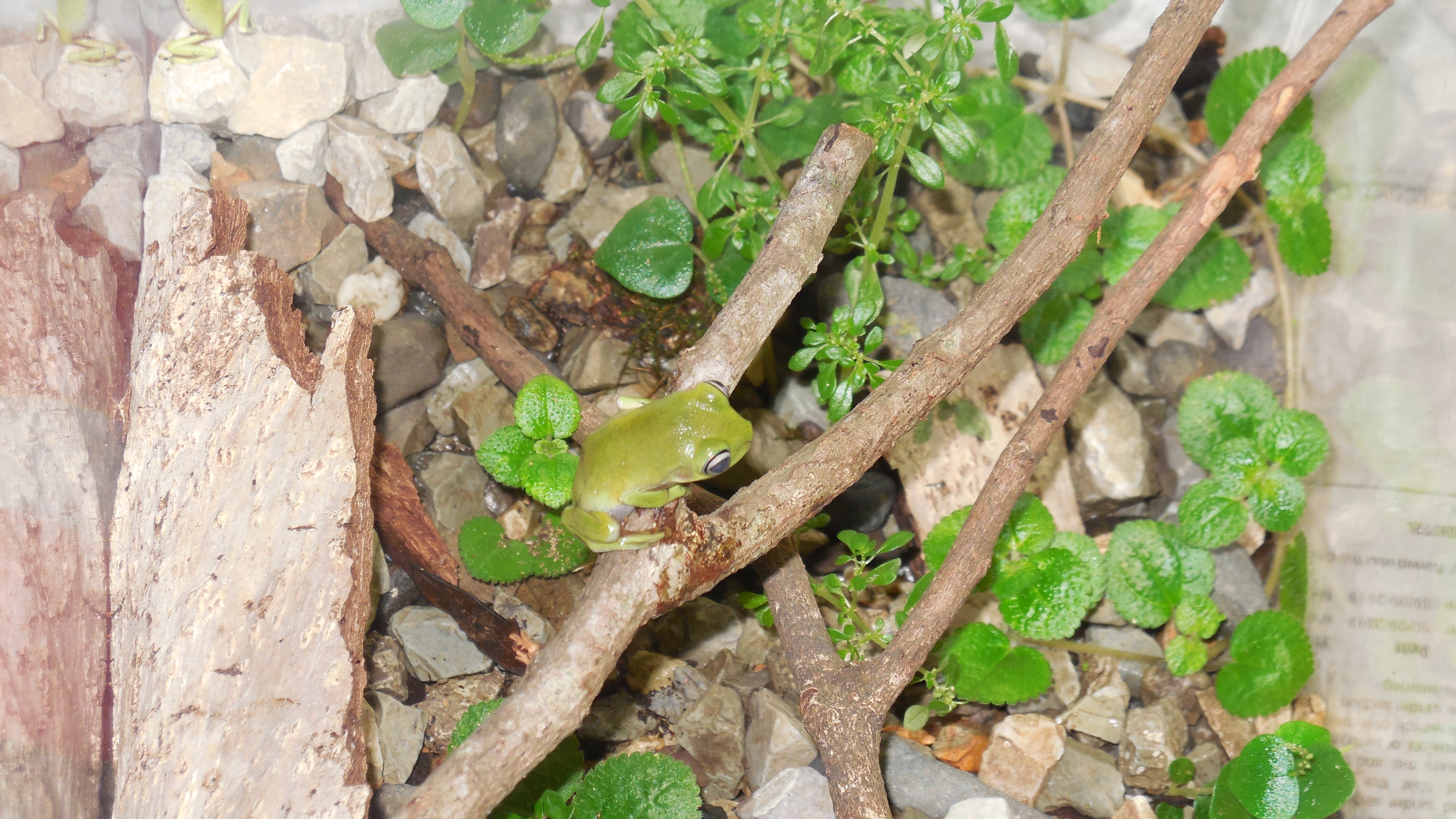The December 2019 Frogress Report updated readers on progress with the ex situ component of the long-term strategy to mitigate the likely impacts of the Amphibian Chytrid Fungus on Papua New Guinean frogs, i.e. opening of the country’s first public display for PNG frogs, at the Port Moresby Nature Park.
We can now report on the first breeding event in the captive facility, which is likely to represent the first captive breeding of frogs in a structured program in PNG.
A group of two female Green Tree Frogs, Litoria caerulea, was initially collected on the Park grounds as one of the species to initiate breeding programs and provide the platform to develop husbandry capability in the Park’s keepers.
The 60 x 60 x 95cm display enclosure was fitted with filtration and misting systems utilizing Park tap water, lighting from Eco tech to support live plants and meet the frogs’ UV requirements, and natural landscaping to highlight the frogs to Park visitors. The frogs were placed in the exhibit on 23 September 2019 and settled well, sitting in view of visitors and readily accepting insect food offered by keepers.
The first signs of breeding behavior occurred on 24 March 2020 when seven frogs were added to the collection (3 males and 2 females) and the males started calling. Breeding behavior was almost immediate and, although amplexus was not observed, eggs were laid in the enclosure’s pool on 25th March and hatched the next day. These were not counted fully, but approximately 95 % from the total egg mass were present. None of the tadpoles died, although about 5% of the eggs were laid on leaf surfaces and dried out.
The tadpoles were fed with fish flakes, frozen lettuce and turtle pellets, and started to metamorphose on 10 April – 15 days after hatching. A selection of tadpoles were measured as they started to metamorphose, and had an average body length of 4cm.
The metamorphosing frogs were transferred to 20 x 20 x 30cm terrarium tanks. Landscaping included gravel substrate and a mixture of moss, creeping Charlie (Pilea nummulariifolia) and rock weed (Pilea microphylla) as vegetation, some perching and dry barks for cover. Eighteen young frogs had emerged at the time of writing. The young frogs were fed with slaters, fruit flies and cricket nymphs bred at the Park. Grass flies are also being offered, but they are difficult to collect.
Most of the captive-bred frogs will be released around the Park once they reach maturity. A small number will be kept on display for breeding purpose, rotating and swapping older frogs with younger females, and also for public awareness.
The entire breeding and rearing event is on show to Park visitors, with the captive-bred frogs maintained behind the display breeding tank. This has been a very valuable learning experience for the Park’s Life Science team and an important step in the long-term strategy to protect PNG’s frogs.
Nature Park needs help: Like many organizations, the Port Moresby Nature Park has been severely impacted by the restrictions imposed in PNG as a result of the coronavirus. Even though the Park has remained open, visitation has declined by 90% and the loss of income has led to staff being sent home and a drastic shortage of funds to support quality animal care. Consequently the Park has launched a GoFundMe Port Moresby Nature Park Wildlife Appeal in conjunction with the Zoo & Aquarium (Australasia) Wildlife Conservation Fund –
https://www.gofundme.com/f/port-moresby-nature-park039s-wildlife-appeal
Frogress Report readers are encouraged to consider supporting this appeal, which will directly assist care of frogs at the Port Moresby Nature Park.
By Chris Banks at Zoos Victoria, Australia; and Ryan Reuma at Port Moresby Nature Park, PNG
Photo © Zoos Victoria

